By Mumtaz Alam, New Delhi
A little over two months before the horrific 26/11 terror attack killed over two hundred people in India’s financial capital Mumbai in 2008, an encounter had taken place in the country’s national capital New Delhi killing two alleged young terror suspects and a police officer. The shootout had almost killed a century-old academic institution also. But the university of repute called Jamia Millia Islamia survived the post-encounter smear campaign and emerged brilliantly. Here is how.
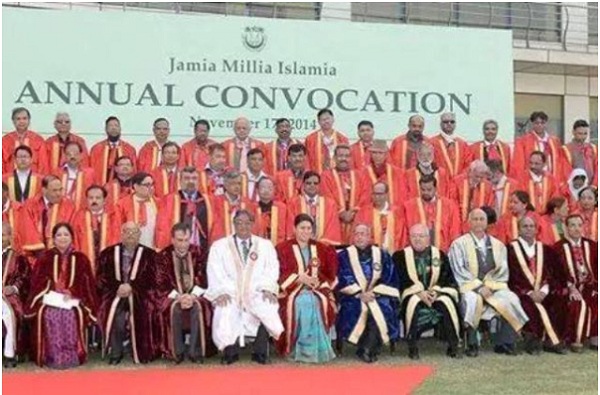
President of India Pranab Mukherjee and HRD Minister Smriti Zubin Irani, along with Lt. General (Retd), Mohammad Ahmed Zaki, Chancellor, JMI and Prof. Talat Ahmad, Vice-Chancellor, JMI at the Jamia Annual Convocation held at Bhopal Grounds, JMI Sports Complex, Jamia Millia Islamia; Monday Nov. 17, 2014 (Photo Courtesy JMI)
Soon after the 19th September 2008 shootout, which became infamous as Batla House encounter, some politicians unleashed an attack on Jamia Millia Islamia because the Muslim terror suspects were reportedly students of the university and the shootout had occurred in its neighbourhood Jamia Nagar. The Hindu right-wing politicians called the prestigious academic institution, founded by stalwarts of the freedom movement of the country in 1920, as ‘Nursery of Terror’, which it wasn’t then, nor is today.
“Since its inception, Jamia has fostered understanding of India’s rich history and culture, including the cultural traditions of Islam. Through its academic programmes, it has instilled in students a national perspective,” said Pranab Mukherjee, President of India, while addressing the recent annual convocation of the university on 17th Nov.
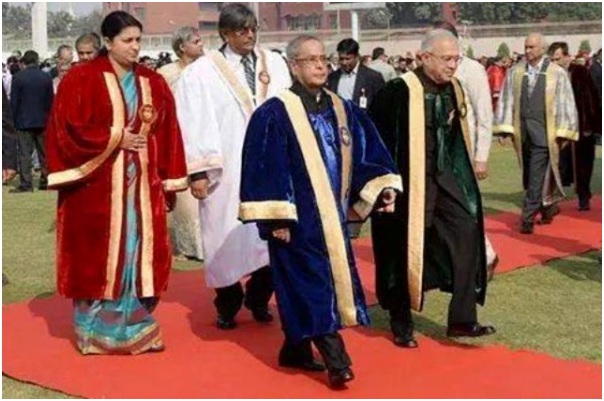
President of India Pranab Mukherjee and HRD Minister Smriti Zubin Irani, along with Lt. General (Retd), Mohammad Ahmed Zaki, Chancellor, JMI and Prof. Talat Ahmad, Vice-Chancellor, JMI at the Jamia Annual Convocation
By declaring Jamia a ‘nursery of terror’ the Hindu right-wing politicians wanted to say two things: One, all students of Jamia are Muslims; Two, they all are being trained for disruptive activities. The fact is altogether different.
At the convocation, a total 4280 degrees/diplomas were awarded to the students who completed their courses in the academic session 2012-13. A little less than half of them were not Muslims.
Jamia has always been a mainstream and secular institution – in 2008 also – accommodating students from different religious communities like Hindu, Sikh and Christian besides Muslim and teaching colourful subjects from politics to engineering.
“In February, 2011 the National Commission for Minority Educational Institution declared Jamia as a minority Institution which by implication means that Jamia can now reserve 50% seats for students of the Muslim community, the University remains committed to modern education and its implicit stated values of nationalism & Secularism. Almost twenty thousand students are enrolled in the University,” says Jamia in its Statistical Data Fact Sheet 2012-13.
Notwithstanding an outside bad image of a Muslim institution in a Muslim ghetto and even after getting the status of minority institution, Jamia Millia, which is currently led by eminent Earth Scientist Prof. Talat Ahmed as Vice Chancellor, has maintained its composite nature and plural culture at campus appealing to thousands of students of various religious hues.
Jamia awards over 200 Ph.D. degrees to research scholars every year – almost half of them are not Muslim.
Of the 222 research scholars who got Ph.D. degrees at this year’s convocation, 96 (that is 43%) were not Muslim. Besides, 52 of the 162 Gold Medallists this year were also not Muslim.
| Jamia Millia Islamia, New Delhi | |||
| Academic Year | Degrees/diplomas awarded | Gold Medallists | Ph.D. Scholars |
| 2012-13 | 4280 | 162 | 222 |
| 2011-12 | 4569 | 154 | 224 |
| 2010-11 | 4179 | 147 | 204 |
| 2009-10 | 4294 | 155 | 279 |
Some of the Hindu research scholars who got Ph.D. degree at this year’s convocation share their experience of studying at Jamia Millia. They all appreciate the environment of Jamia stressing there is no religious bias.Jamia was founded in 1920 by luminaries like Maulana Mohammad Ali Jauhar, Maulana Mahmood Hasan, Hakim Ajmal Khan, A.M. Khawaja, Dr. Mukhtar Ahmad Ansari and Dr. Zakir Husain. In 1925, its campus was shifted from Aligarh to Delhi. In 1962, Jamia was granted ‘deemed university’ status and in 1988, it became a Central University. In 2011, it got the status of minority institution.Jamia has a wide academic profile. It caters to learning in a variety of disciplines at various levels from under-graduate to Ph.D.
“It is heartening to know that there are over thirty centres dedicated to research in areas like peace and conflict resolution, women’s studies, media and governance, north-east studies, dalit and minority studies, and comparative religions and civilization,” said President Pranab Mukherjee in his convocation speech.
But he also expressed pain at the fact that no Indian academic institution including Jamia has ever made it to the world ranking.
We have made rapid strides in boosting our higher educational infrastructure. There are 723 universities and over 37,000 colleges in our country. Yet, many of our institutes lack quality that denies students world-class education…There is not a single Indian institution amongst the top 200 universities in the world according to reputed surveys,” added the President.

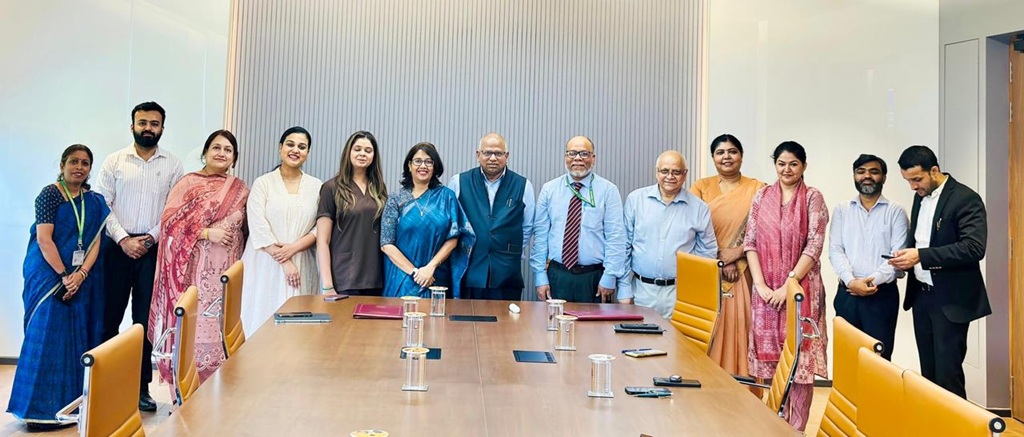
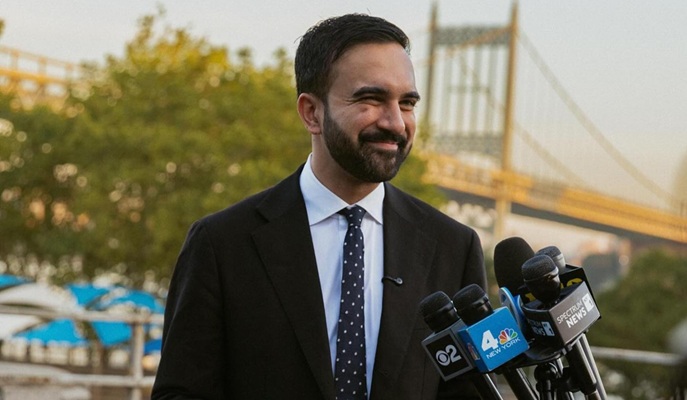

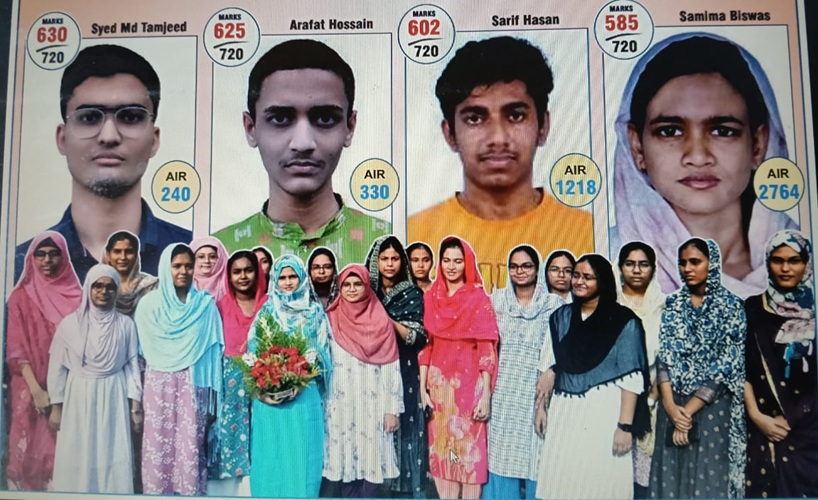
0 Comments